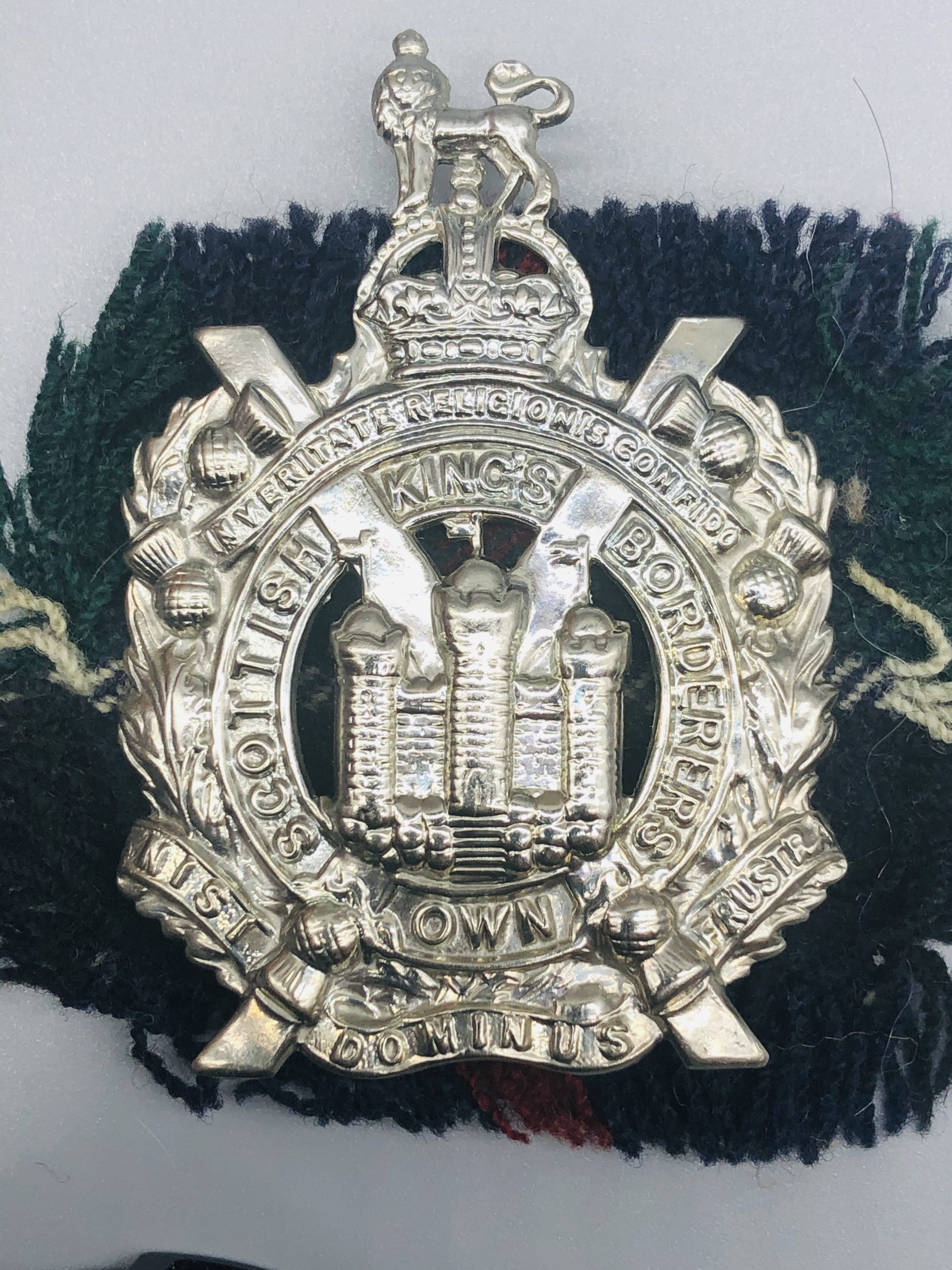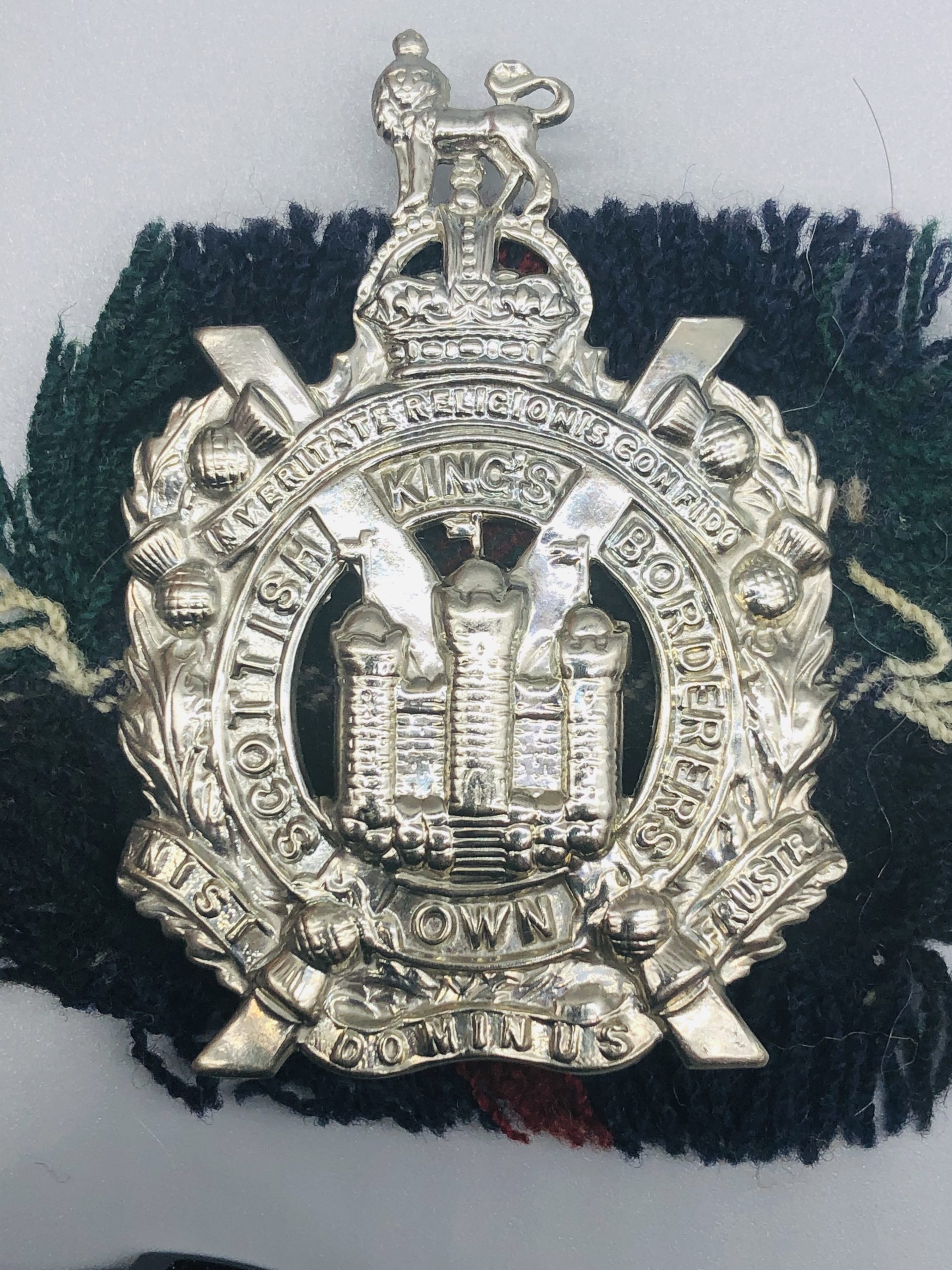Description
King’s Own Scottish Borderers Cap Badge
The King’s Own Scottish Borderers Cap badge, was first introduced in 1805 when the regiment was given its royal status with the title King’s Own Borderers at the command of King George III. The new badge incorporating the new motto In Veritate Religionis Confido (I trust in the truth of religion), was surmounted by the white horse of Hanover and the royal cipher with the garter and crown. It was worn on the shoulder-belt plate.
The King’s Own Scottish Borderers Cap badge first appeared on the regimental headdress in the 1770s during the colonelcy of Lord Lennox (1762-1805) when, according to Woollcombe, it consisted of ‘Scottish insignia’, presumably to preserve a link to its Scottish roots, on account of the regiment having taken the title ‘the Sussex regiment’.
In 1828 it was proposed that the badge of the regiment should at last be the arms of Edinburgh, a castle and a shield, with the motto of the city, Nisi Domnus Frustra, which it was supposed, must have been the inspiration behind George III’s suggested religious motto.
Thus, in 1832, after a four-year correspondence with Horse Guards, the regiment was granted a new cap badge featuring, rather than the white horse of Hanover, a depiction of Edinburgh castle. This was coupled with the restoration of the regiment’s traditional privilege of ‘beating up for recruits’ through the streets of Edinburgh. This had been the achievement of Major Courtenay Chambers who subsequently became CO of the regiment from 1830 to 1848.
The modern regimental badge first saw the light in 1871 as that worn on the Glengarry and peaked forage cap. Then of course it was missing the word ‘Scottish’ as the regiment was at that date the King’s Own Borderers. It also bore the regimental number twenty-five in roman numerals (XXV), which was discontinued with the army reforms of 1881.
During the 1890s the The King’s Own Scottish Borderers Cap badge was worn as a plate on the new regimental
In 1961 the badge was examined by the Lord Lyon King of Arms who advised that the royal crest of England should be changed to the sovereign’s crest of Scotland – a lion sejant affronté erect that is, seated looking to the front and holding the sword and sceptre. The commanding officer sounded out opinion and was left in no doubt that the regiment wished to retain its English crest. Thus, the crown of St Edward remained and was, until amalgamation, popularly and affectionately referred to as ‘the dog and bonnet’.





